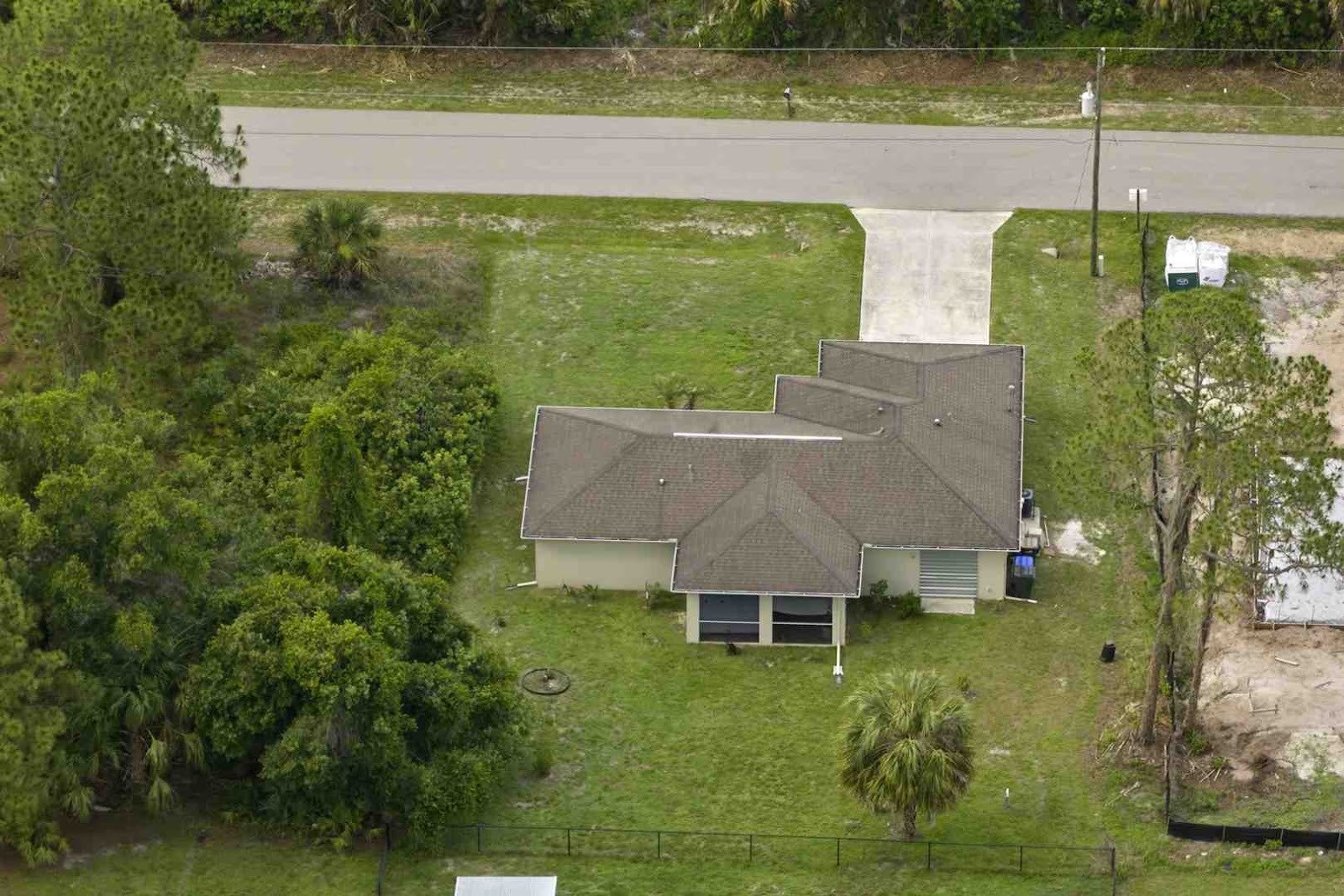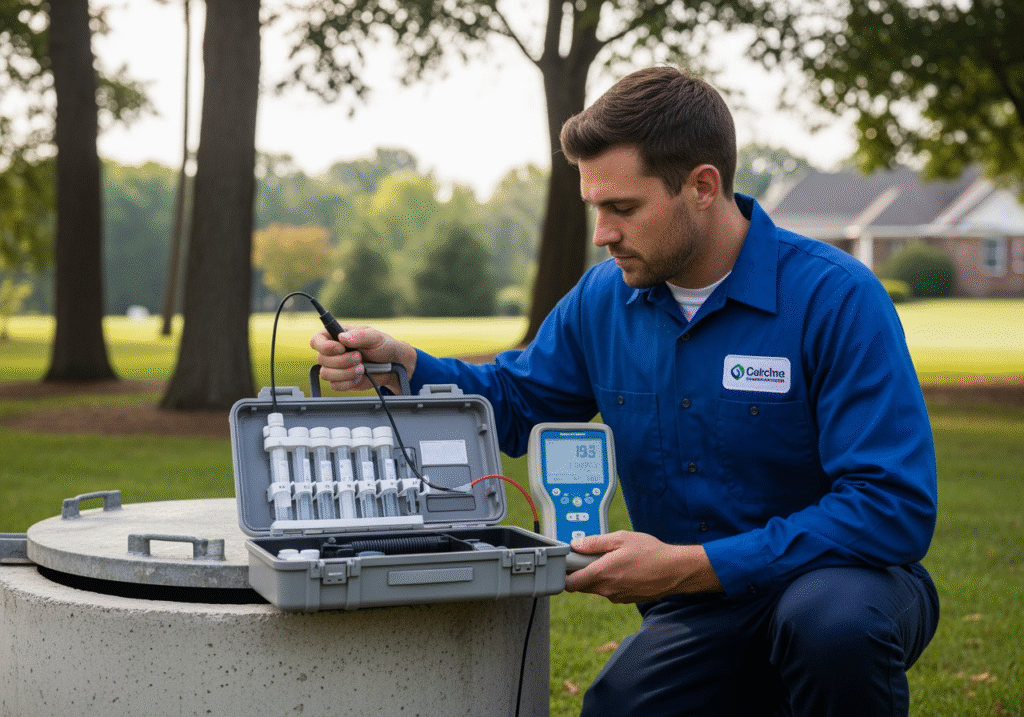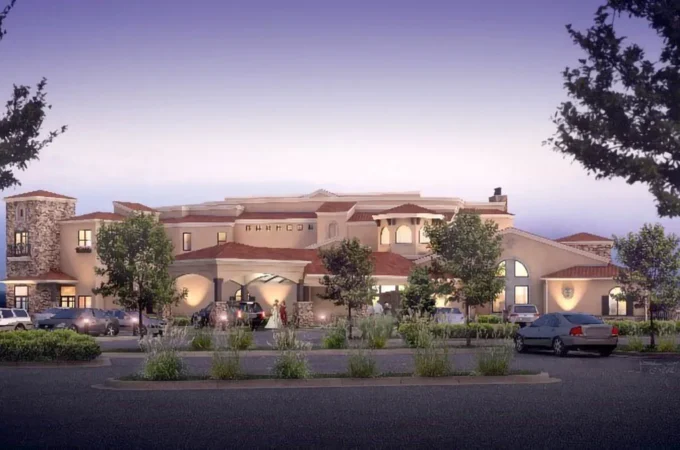
Beyond the Basics: Investing in Your Home’s Well and Windows
Table of Contents
ToggleIntroduction: Thinking Deeper About Home Improvements
Imagine a home that always feels right. Comfortable in every season, with clean, reliable water flowing from every tap. A home where your energy bills are lower, and you feel truly secure. This isn’t just a dream; it’s the result of smart home infrastructure upgrades.
We often focus on visible improvements, such as paint colors or new furniture. But the true, lasting value and comfort of your home lie deeper. It’s in the foundational elements that work tirelessly, often out of sight.
Investing in these core systems is crucial for long-term financial stability, security, and savings. These upgrades not only protect your home but also enhance your daily life. They move beyond quick fixes to create a durable, efficient living space.
In this guide, we will explore how a whole-house systems approach can transform your home. We’ll examine specific upgrades that enhance its health, safety, and long-term value. Think of it as building a strong backbone for your most important asset.
Our homes rely on several critical pillars. These include the Building Envelope (like your walls and windows), HVAC (heating, ventilation, and air conditioning), Electrical(powering everything), and Water Systems(delivering and removing water). Understanding your home’s complete Crabtree water infrastructure, High-quality, energy-efficient window and door upgradesare a crucial step in this process.
This approach ensures that all parts of your home work together smoothly. It leads to a more resilient, efficient, and healthy environment for you and your family.

Securing Your Water Source: The Importance of Well System Upgrades
For over a million homes across Ohio and countless others nationwide, private wells are the lifeline, supplying clean, reliable water directly to the tap. This independence offers significant advantages, but it also places the responsibility of maintenance and quality assurance firmly in the homeowner’s hands. Upgrading your well system isn’t just about preventing breakdowns; it’s about safeguarding your family’s health, ensuring system resilience, and maintaining consistent water quality.
Unlike municipal water systems, which are regularly monitored and treated, private wells require proactive attention. Contaminants can enter a well system from various sources, including agricultural runoff, aging infrastructure, or even natural geological formations. This makes understanding and maintaining your well’s infrastructure a critical component of overall home health and safety.

Signs Your Well System Needs Attention
Your well system often provides subtle clues when it’s struggling. Recognizing these early warning signs can prevent minor issues from escalating into costly, inconvenient emergencies.
- No Water: This is the most obvious and urgent sign. It could indicate a power failure, a tripped breaker, a pump malfunction, or a critically low water level in the well.
- Fluctuating Pressure: If your shower suddenly goes from strong to a trickle, or multiple fixtures cause a significant pressure drop, it might signal a failing pressure tank, a partially clogged pipe, or an overworked pump.
- Sputtering Faucets: Air coming out of your faucets suggests air is entering the system. This could be due to a leak in the drop pipe, a low water level, or a faulty foot valve.
- Cloudy Water: While temporary cloudiness can occur after heavy rain, persistent cloudy or discolored water points to sediment issues, a compromised well casing, or other contaminants.
- Strange Tastes or Smells: Metallic tastes, sulfur (rotten egg) smells, or earthy odors are clear indicators of water quality problems that require immediate testing and treatment.
- High Electric Bills: If your pump is running constantly or short-cycling (turning on and off frequently), it’s working harder than it should, leading to increased energy consumption and higher utility costs. A struggling pump can significantly impact your household budget.
- Pump Short-Cycling: This rapid on-off behavior of the pump indicates a problem with the pressure tank, a leak in the system, or a faulty pressure switch. It stresses the pump, reducing its lifespan.
Key Considerations for Your Well System’s Home Infrastructure Upgrades
When evaluating your well system, several components are crucial for its long-term performance and the quality of your water.
- Well Casing Integrity: The casing protects the well from surface contamination. Over time, it can corrode or crack. An inspection can reveal issues that might allow contaminants to enter your water supply.
- Pump Efficiency: Older pumps can be less energy-efficient. Upgrading to a modern, appropriately sized submersible pump can save energy and provide more consistent water pressure. Quality submersible pumps typically last 15-25 years, but their efficiency can degrade over time.
- Pressure Tank Function: The pressure tank stores water and maintains pressure, reducing the pump’s workload. A failing tank can cause short-cycling and inconsistent pressure. Upgrading to a larger or more efficient tank can extend pump life and improve water delivery.
- Water Testing Frequency: Annual water testing for bacteria, nitrates, and other common contaminants is essential, especially for private wells. The Ohio EPA recommends comprehensive testing every 3 to 5 years. If you notice any changes in water quality, immediate testing is crucial. For a thorough understanding of your well’s health and potential upgrades, a professional assessment is invaluable. Experts can evaluate your entire system, from the wellhead to the pressure tank, and provide customized recommendations tailored to your specific needs. Understanding your home’s complete water infrastructure, including well drilling, pump services, and water conditioning, is paramount for ensuring a safe and reliable water supply.
Enhancing the Building Envelope with Modern Windows
Beyond your water source, the “skin” of your home—its building envelope—is critical for comfort, energy efficiency, and overall resilience. Windows, in particular, play a dual role: they let in natural light and offer views, but they are also significant points of energy loss. Upgrading your windows is a foundational home infrastructure improvement that impacts everything from your heating and cooling bills to the quietness and comfort of your living spaces.
Older, single-pane windows can be responsible for a substantial amount of heat transfer, allowing warm air to escape in winter and seep in during summer. This directly contributes to higher energy consumption, with heating and cooling accounting for over half (51%) of residential energy use. Modern windows, however, are engineered to minimize this energy exchange, creating a more stable indoor environment.

Windows as Critical Home Infrastructure Upgrades
Investing in modern windows offers a multitude of benefits that extend far beyond aesthetics:
- Sealing Air Leaks: Drafty windows are a major source of energy waste. New windows provide a tighter seal, preventing conditioned air from escaping and unconditioned air from entering. Sealing air leaks and adding insulation to your attic alone can save up to 10% on annual energy bills, and windows play a similar critical role.
- Reducing Heat Transfer: Advanced window technologies significantly mitigate heat conduction, convection, and radiation. This means your HVAC system operates less, resulting in lower energy bills and a more comfortable home year-round. Replacing old, drafty windows with ENERGY STAR certified windows can lower household energy bills by an average of 12 percent.
- UV Protection: Many modern windows come with low-emissivity (Low-E) coatings that block harmful UV rays. This protects your furniture, flooring, and artwork from fading, extending their lifespan.
- Advanced Framing & Passive Solar Design Principles: When combined with advanced framing techniques in new construction or thoughtful design in existing homes, energy-efficient windows can optimize natural light and leverage passive solar gains. This strategy helps warm your home in winter while minimizing heat gain in summer, further reducing reliance on artificial heating and cooling.
- Noise Reduction: The multiple panes and gas fills in energy-efficient windows also serve as excellent sound barriers, creating a quieter, more peaceful indoor environment, which is especially beneficial for homes in urban areas or near busy roads.
High-quality, energy-efficient window and door upgrades improve home value, comfort, and energy performance.
Choosing the Right Features for Efficiency
When selecting new windows, understanding these key features will help you make an informed decision:
- Multiple Panes: Double-pane (insulating glass units or IGUs) and triple-pane windows create airspaces that act as insulation.
- Gas Fills (Argon/Krypton): Inert gases, such as argon or krypton, are often sealed between the glass panes. These gases are denser than air and provide superior insulation, further reducing heat transfer.
- Low-E Coatings: These microscopically thin, transparent metallic coatings are applied to the glass surface to reflect infrared light (heat) while allowing visible light to pass through. This keeps the heat inside during winter and outside during summer.
- Frame Materials:Vinyl: Durable, low-maintenance, and excellent insulators.
- Wood: Naturally insulative, aesthetically pleasing, but requires more maintenance.
- Fiberglass: Strong, stable, and highly energy-efficient, offering good insulation properties.
- ENERGY STAR Ratings: Look for the ENERGY STAR label, which indicates that a window meets strict energy efficiency guidelines set by the U.S. Environmental Protection Agency. These ratings help homeowners choose products that will deliver significant energy savings.
The Broader Impact of Foundational Home Infrastructure Upgrades
The decision to invest in home infrastructure upgrades, such as well system improvements and energy-efficient windows, extends far beyond immediate comfort. It’s a strategic move that addresses critical issues like energy consumption, rising utility bills, and the long-term resilience of your home. These foundational changes contribute to a healthier indoor environment, protect your property value, and align with broader sustainability goals and a reduced environmental footprint.
The residential and commercial sectors together consume nearly 40% of our nation’s energy. With more than half of our home energy use dedicated to heating and air conditioning, and 79% of overall energy still sourced from fossil fuels, every upgrade that reduces energy demand makes a significant difference.

Creating a More Resilient and Efficient Home
A home with upgraded water and window systems is inherently more robust and less susceptible to external pressures.
- Reduced Fossil Fuel Reliance: By improving the thermal performance of your home with efficient windows and optimizing your well system, you reduce the demand for energy-intensive heating, cooling, and water pumping. This lessens your reliance on fossil fuels, contributing to a cleaner energy future.
- Lower Energy Bills: This is one of the most tangible benefits for homeowners. With improved insulation from windows and a more efficient well pump, your HVAC system and other appliances operate more efficiently, resulting in noticeable savings on your monthly utility bills. For the average American household, nearly half of the annual energy bill is spent on heating and cooling, amounting to more than $900 per year. Upgrades can significantly cut into this.
- Increased Comfort During Extreme Weather: Modern windows and a reliable well system provide a buffer against increasingly frequent extreme weather events. You’ll experience fewer drafts, more consistent indoor temperatures, and a dependable water supply, even when public utilities face challenges.
- Protecting Home Value: Energy-efficient homes with modern, well-maintained infrastructure are highly attractive to potential buyers. These upgrades are seen as long-term investments that improve the marketability and resale value of your property.
- Proactive Maintenance vs. Reactive Repairs: Investing in upgrades now shifts your approach from constant, emergency-driven repairs to planned, proactive maintenance. This not only saves money in the long run but also provides peace of mind.
Improving Health and Well-being
The benefits of these upgrades also translate directly into a healthier, more comfortable living space for you and your family.
- Cleaner Drinking Water: A well-maintained and regularly tested well system ensures your family has access to safe, contaminant-free drinking water. This is crucial for preventing waterborne illnesses and long-term health issues.
- Fewer Drafts and Cold Spots: Energy-efficient windows eliminate drafts, creating a more uniform and comfortable temperature throughout your home. This reduces the need to adjust thermostats constantly and prevents uncomfortable cold spots.
- Reduced Potential for Mold and Mildew: Improved air sealing and reduced condensation from modern windows help control indoor humidity levels, thereby reducing the potential for mold and mildew. This significantly lowers the risk of mold and mildew growth, which can trigger allergies and respiratory problems.
- Better Indoor Air Quality: By reducing drafts and controlling humidity, these upgrades help maintain better indoor air quality. With less outside pollution, dust, and allergens entering the home, the risk of moisture-related pollutants is minimized.
- Quieter Indoor Environment: The insulating properties of modern windows also extend to sound. They effectively block out exterior noise, contributing to a more tranquil and restful home environment.
Frequently Asked Questions about Foundational Upgrades
How do I know if my well system needs to be upgraded?
Look for telltale signs, such as inconsistent water pressure, unusual noises from the pump, sputtering faucets, or sudden changes in the taste, color, or smell of your water. A significant increase in your electric bill without a shift in usage could also indicate a struggling pump. Regular professional inspections are the best way to assess the health of your entire system, from the pump to the pressure tank, and identify potential issues before they become emergencies.
What makes a window “energy-efficient”?
Energy-efficient windows have several key features working together. These include multiple panes of glass (typically double or triple-pane) with insulating gas, such as argon or krypton, sealed between them, and special low-emissivity (Low-E) coatings that reflect heat. The frame material (such as vinyl, wood, or fiberglass) and the quality of the installation are also critical for overall performance and energy savings. Look for the ENERGY STAR label as a reliable indicator of efficiency.
How do these upgrades contribute to a healthier home?
Upgrading your well system ensures your family has access to safe, clean drinking water, free from harmful contaminants. Regular testing and proper treatment address potential health risks. Modern, well-sealed windows prevent drafts that can lead to discomfort and reduce moisture intrusion that can cause mold and mildew. This significantly improves your home’s indoor air quality by reducing allergens and pollutants, creating a more comfortable and healthier living environment.
Conclusion: Investing in a Foundation for the Future
The journey to a more comfortable, efficient, and healthy home begins with understanding its foundational infrastructure. By looking beyond superficial improvements and focusing on critical systems, such as your well and windows, you’re making a smart homeowner investment that pays dividends for years to come.
These upgrades aren’t just about fixing problems; they’re about enhancing your daily life, securing your family’s well-being, and building a resilient asset. From ensuring a pristine water supply to creating a thermally stable and quiet indoor environment, every improvement contributes to your comfort and peace of mind.
Accept a long-term vision for your home. Prioritize the upgrades that create a durable, efficient, and healthy living space, and you’ll enjoy the benefits for generations to come.






